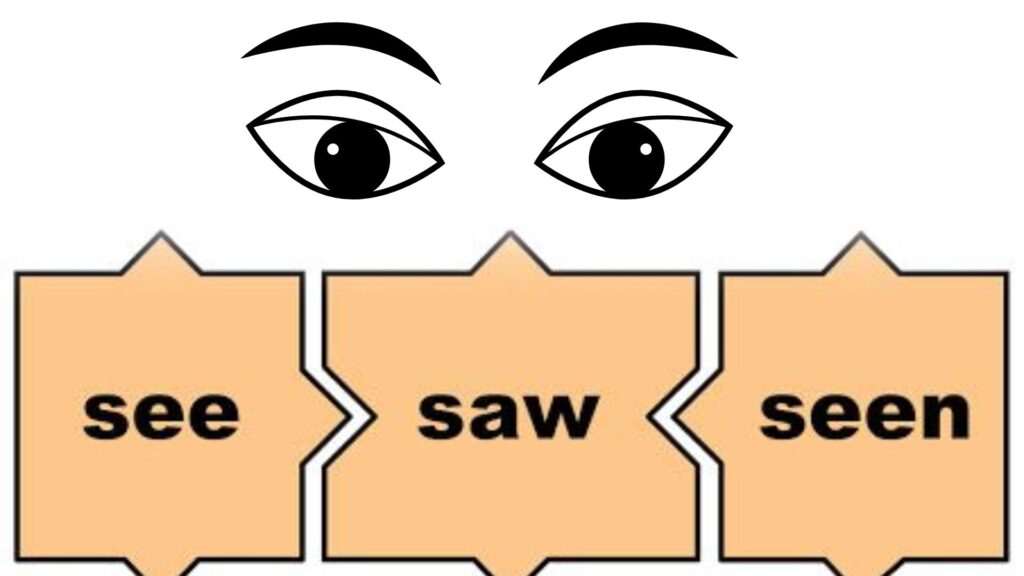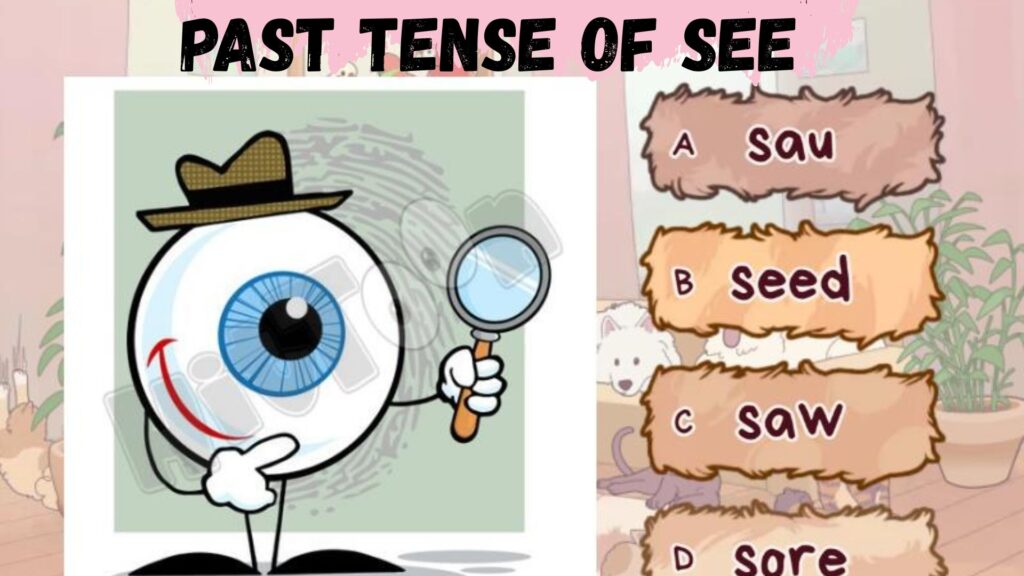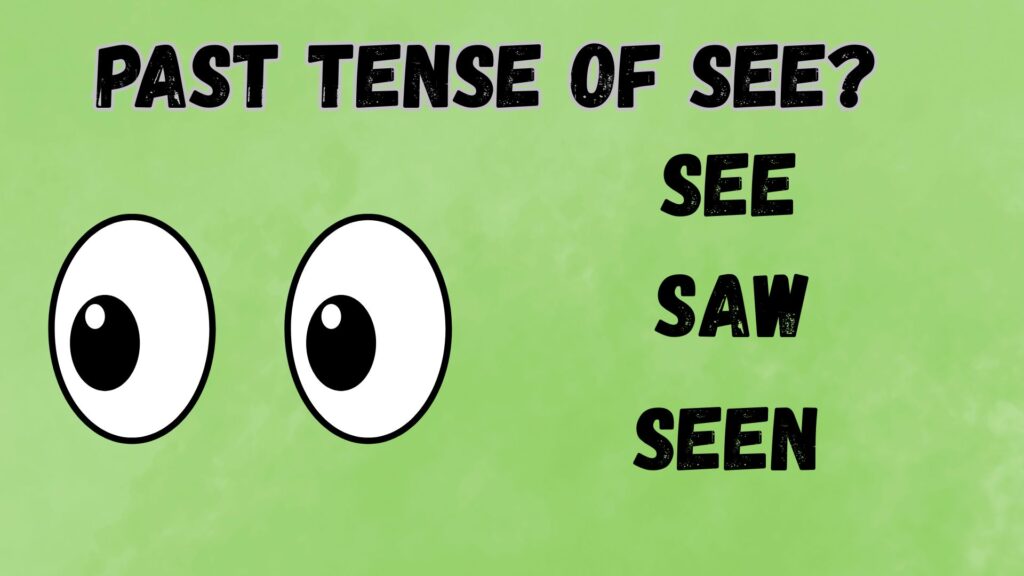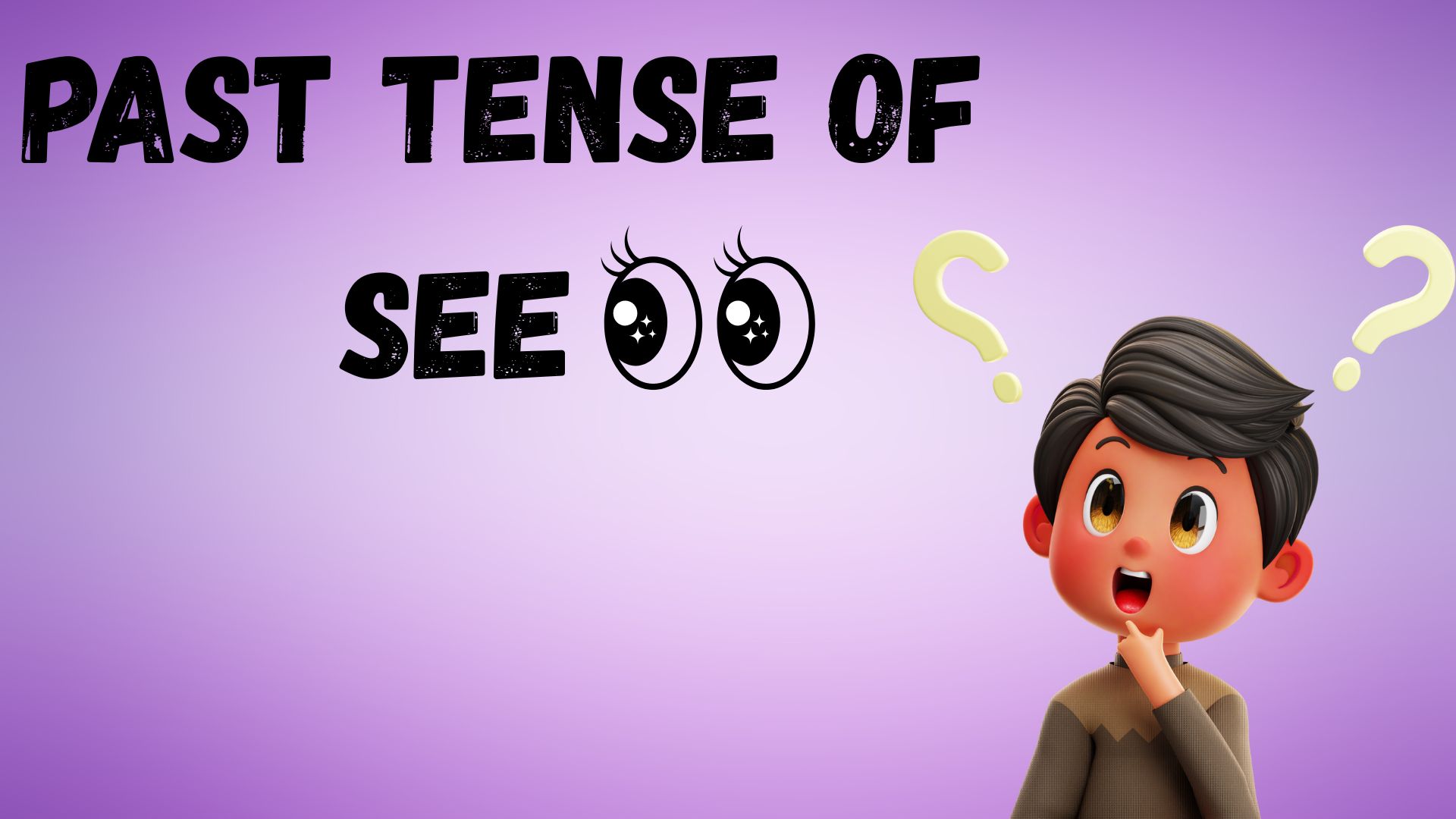Past Tense of See
Ever caught yourself pausing mid-sentence, wondering if you should say “saw” or “seen”? You’re not alone. This little verb see might look simple, but its past forms trip up learners and native speakers alike. So let’s clear it up once and for all.
📌 The Basics: See, Saw, Seen

Here’s the deal:
- See is the base verb.
- Saw is the simple past tense.
- Seen is the past participle.
Let’s break that down with examples.
Base Verb: I always see birds outside my window.
Simple Past: Yesterday, I saw a hawk swoop down.
Past Participle: I’ve seen that kind of behavior before.
📜 “Saw” – The Simple Past Tense
Use saw when describing a completed action in the past that doesn’t need a helper (auxiliary) verb.
✅ Correct:
- I saw the northern lights last night.
- We saw that movie together in 2019.
❌ Incorrect:
- I have saw that film already. ← Nope.
Here’s how it looks in a real-world context.
📧 Sample Email: Simple Past Tense of see
Subject: I Saw Your Presentation at the Conference
Hey Angela,
Just wanted to say I saw your keynote on AI ethics at the TechCon summit really insightful! I especially appreciated the part about algorithm transparency.
Looking forward to connecting soon.
Best,
Jared
🧩 “Seen” – The Past Participle

Now here’s where people often go wrong.
Seen always needs an auxiliary verb like has, have, or had in front of it.
✅ Correct:
- I’ve seen this episode three times.
- She had seen the warning signs before the crash.
❌ Incorrect:
- I seen him at the store yesterday. ← Common mistake.
This form shows up in perfect tenses, which connect the past to the present or to another moment in the past.
📧 Sample Email: Present Perfect Tense
Subject: Have You Seen My Draft?
Hi Tom,
I have seen your notes on the latest proposal, but I wanted to confirm something before finalizing.
Let me know if we can chat today.
Thanks,
Nia
🔍 Understanding Perfect Tenses
Let’s dive into the grammar that fuels the use of seen.
💡 Present Perfect
Used for actions that happened at an unspecified time before now:
- I have seen that face somewhere before.
💡 Past Perfect
Used to show that something happened before another past event:
- By the time he arrived, I had seen enough.
💡 Future Perfect
Used to show that something will have been completed in the future:
- By next week, I will have seen every Marvel movie.
🧠 Grammar Tip: If you’re using seen, you better have a helper verb like has, have, had, or will have tagging along.
🧠 Why “See” Is an Irregular Verb
Here’s the thing: “See” doesn’t follow the regular -ed rule.
- A regular verb: walk → walked → walked
- An irregular verb: see → saw → seen
This is called an irregular conjugation, and “see” shares this pattern with verbs like:
| Base Verb | Past Tense | Past Participle |
|---|---|---|
| draw | drew | drawn |
| eat | ate | eaten |
| blow | blew | blown |
Learning these is less about rules and more about repetition and context.
🗺️ A Glimpse into History: The Roots of “See”
The word see has deep roots in the English language. It comes from Old English seon, derived from Proto-Germanic sehwanan, meaning “to see, perceive, or observe.”
Through Middle English (sēn), it evolved into our modern “see,” carrying not just the physical meaning of vision but also ideas like “understand,” “witness,” and “experience.”
⚠️ Common Mistakes with ‘See’ Forms
Watch out for these slip-ups:
| ❌ Incorrect | ✅ Correct |
|---|---|
| I seen her at the cafe. | I saw her at the cafe. |
| He has saw that video already. | He has seen that video already. |
| I sees the issue. | I see the issue. |
🛠️ English Grammar Tip: These mistakes often show up in spoken English, especially in informal settings or regional dialects, but they should be avoided in writing.
🧠 Using Auxiliary Verbs with “Seen”
To use seen correctly, it has to pair with auxiliary verbs:
- Have/Has → I have seen / She has seen
- Had → We had seen
- Will have → They will have seen
🧪 Real-Life Scenario: Past Perfect in Action
Let’s say you’re emailing a coworker after a missed meeting.
📧 Sample Email: Past Perfect Usage
Subject: Missed You at the Workshop
Hi Jamie,
I was looking for you at the onboarding session yesterday. By the time I arrived, you had already seen the introduction and left.
Let’s catch up tomorrow?
Cheers,
Dani
📊 Quick Tense Comparison Table
| Tense | Example Sentence |
|---|---|
| Simple Past | I saw the fireworks. |
| Present Perfect | I have seen that play before. |
| Past Perfect | I had seen her before the meeting. |
| Future Perfect | I will have seen the results by Monday. |
| Present Perfect Continuous | I have been seeing a therapist weekly. |
| Past Continuous | I was seeing someone at the time. |
🎯 see vs. saw vs. seen Which to Use?

When in doubt, remember this:
- Use see for now or always.
- Use saw for specific events in the past.
- Use seen when there’s a have, has, or had in the sentence.
🔄 Tense Confusion? Here’s How to Practice
If you’re learning English or teaching it, try using tools like:
- Verb conjugation charts
- Grammar apps
- Writing prompts
- Tense comparison tables
- Or simply reading aloud your ear will catch mistakes your eyes won’t.
🌐 Related Concepts and LSI Keywords
As you continue learning, these LSI keywords can guide your study:
- see vs. saw vs. seen
- past tense of irregular verbs
- verb conjugation in English
- perfect tenses in English
- English grammar tips
- auxiliary verb rules
- subject-verb agreement
- common tense errors
✅ Final Thoughts
See, saw, and seen each play a unique role in English grammar. It’s not just about memory it’s about understanding where they belong in time. From casual texts to formal business emails, using these verb forms correctly shows you’ve mastered one of the trickiest parts of English: irregular verb conjugation.
Keep practicing. Keep reading. And if you’ve seen someone use it wrong, now you know why.

